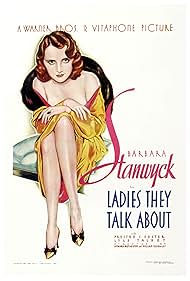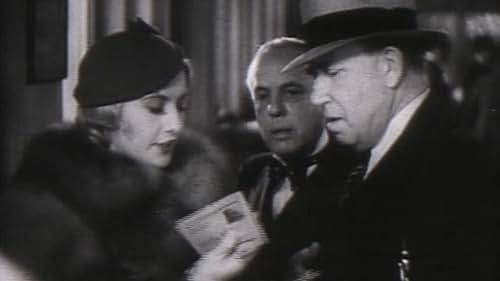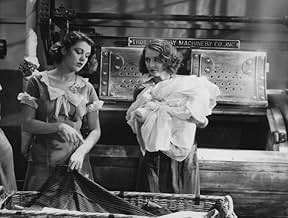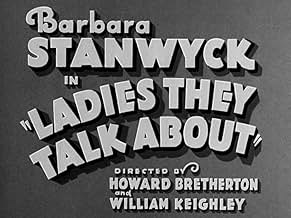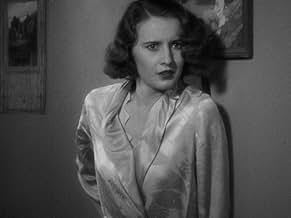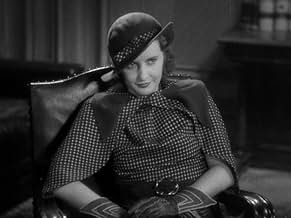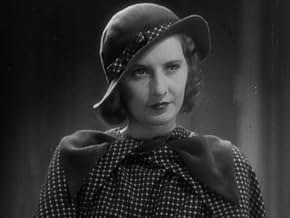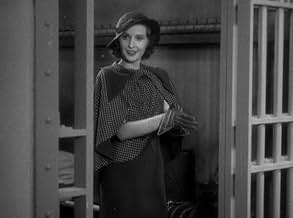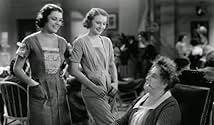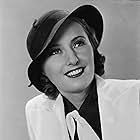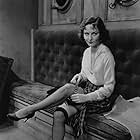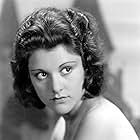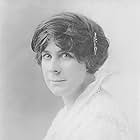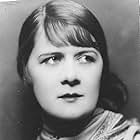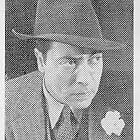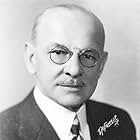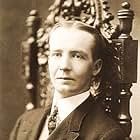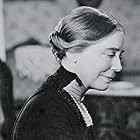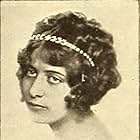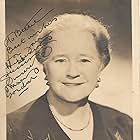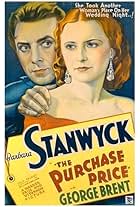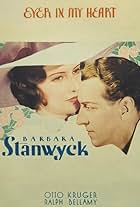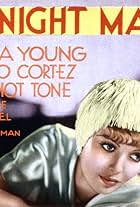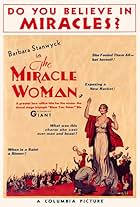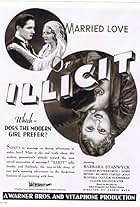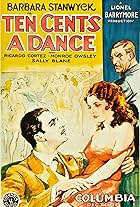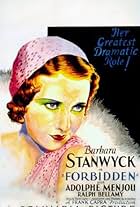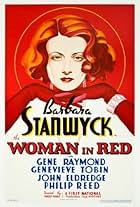IMDb RATING
6.6/10
1.9K
YOUR RATING
Attractive Nan, member of a bank-robbery gang, goes to prison thanks to evangelist Dave Slade...who loves her.Attractive Nan, member of a bank-robbery gang, goes to prison thanks to evangelist Dave Slade...who loves her.Attractive Nan, member of a bank-robbery gang, goes to prison thanks to evangelist Dave Slade...who loves her.
Preston Foster
- David Slade
- (as Preston S. Foster)
Harry C. Bradley
- Attendee at Revival Meeting
- (uncredited)
Louise Carter
- Lefty's Landlady
- (uncredited)
Davison Clark
- Jail Chief
- (uncredited)
Grace Cunard
- Prisoner Marie
- (uncredited)
Cecil Cunningham
- Mrs. Arlington
- (uncredited)
Louise Emmons
- Prisoner Jessie Jones
- (uncredited)
Mary Gordon
- Prisoner in Visiting Room
- (uncredited)
Harry Gribbon
- Bank Guard
- (uncredited)
Storyline
Did you know
- TriviaFilm has some rather blatant and oddball plugs for Warner Brothers stars. In several scenes photos of Joe E. Brown (whom Lillian Roth sings to) and Dick Powell are seen in the women's cells.
- GoofsWhen Linda meets Nan, they stroll down a path through the prison yard. It's clear that the background of the path is projection footage as there is gusty wind violently whipping a tree and shrubbery around, yet their hair doesn't move.
- Quotes
[Nan calculatingly exposes her legs]
District Attorney: You're wasting that panorama on me, Nan. Save it for Dave Slade.
- ConnectionsFeatured in Barbara Stanwyck: Fire and Desire (1991)
- SoundtracksSt. Louis Blues
(1914) (uncredited)
Written by W.C. Handy
Played during the opening credits and at the end
Sung offscreen by Etta Moten in a prison sequence
Featured review
It's a little surprising for those of us who grew up on a double dose of the aging Stanwyck playing an almost hysterical, often villainous matriarch in low-budget theatrical releases or on TV, to see how pale, slender, and vulnerable she was in the early 30s.
Here she's the daughter of a small-town deacon who has suffered through one lecture too many and gone wrong, sent to San Quention for involvement in a bank robbery. (I think -- come to think about it, I'm not sure WHY she was sent up. No evidence links her to complicity in the robbery. All that stands against her is an informal confession to a guy she likes, not made under oath, and easily recanted. Well -- no matter.) Preston Foster is the righteous DA she falls for. He grew up in the same small town, the son of the town drunk, but he straightened up and flew right. Too right, for some tastes. By the way, the small town they grew up in, in which everyone knew everyone else's name, is Benicia, now absorbed into the greater San Francisco Bay Area and it has a population of more than 25,000.
The plot, which comes from a play, carries a lot of familiar real-life baggage and is less interesting than the characters we meet in the course of a kind of tribal study of the ladies' section of San Quentin. There are, first of all, quite a few African-Americans among the inmates, a bit surprising considering the audience the film was aimed at. They're treated mostly humorously but not moreso than the white inmates, and the humor isn't stereotypical. Ruth Donnelly, a familiar face in old movies if there ever was one, is the not entirely unsympathetic warden or whatever her title is. She sometimes carries around a gigantic cockatoo or something on her shoulder which seems to serve no purpose except to scare defiant inmates when it flexes its wings and squawks. Lillian Roth has a prominent supporting part. She's quite pretty, and she sings old songs with more zest than Susan Hayward did in the weeper, "I'll Cry Tomorrow." (Great title, there, Hollywood.) There is the elderly Madam, happily ensconced in her chair, making wisecracks about how all the inmates are now "my girls." Nobody in the movie is thoroughly rotten. If there is a villain, it is the woman who has been born again while in prison and is spiteful, jealous and judgmental. Saints preserve us from zealots. Stanwyck is a surprise in her performance too. She's as good as she's ever been, slouching around in her prison dress, hands in pockets, giving as good as she gets. A grim cigar-smoking dyke is held up for fun without being ridiculed or turned into a monster.
The movie is a curiosity. It's easy to watch, kind of fun, and not badly done. Snippy dialogue, a quick pace, an unpretentious plot, all make it worth a watch.
Here she's the daughter of a small-town deacon who has suffered through one lecture too many and gone wrong, sent to San Quention for involvement in a bank robbery. (I think -- come to think about it, I'm not sure WHY she was sent up. No evidence links her to complicity in the robbery. All that stands against her is an informal confession to a guy she likes, not made under oath, and easily recanted. Well -- no matter.) Preston Foster is the righteous DA she falls for. He grew up in the same small town, the son of the town drunk, but he straightened up and flew right. Too right, for some tastes. By the way, the small town they grew up in, in which everyone knew everyone else's name, is Benicia, now absorbed into the greater San Francisco Bay Area and it has a population of more than 25,000.
The plot, which comes from a play, carries a lot of familiar real-life baggage and is less interesting than the characters we meet in the course of a kind of tribal study of the ladies' section of San Quentin. There are, first of all, quite a few African-Americans among the inmates, a bit surprising considering the audience the film was aimed at. They're treated mostly humorously but not moreso than the white inmates, and the humor isn't stereotypical. Ruth Donnelly, a familiar face in old movies if there ever was one, is the not entirely unsympathetic warden or whatever her title is. She sometimes carries around a gigantic cockatoo or something on her shoulder which seems to serve no purpose except to scare defiant inmates when it flexes its wings and squawks. Lillian Roth has a prominent supporting part. She's quite pretty, and she sings old songs with more zest than Susan Hayward did in the weeper, "I'll Cry Tomorrow." (Great title, there, Hollywood.) There is the elderly Madam, happily ensconced in her chair, making wisecracks about how all the inmates are now "my girls." Nobody in the movie is thoroughly rotten. If there is a villain, it is the woman who has been born again while in prison and is spiteful, jealous and judgmental. Saints preserve us from zealots. Stanwyck is a surprise in her performance too. She's as good as she's ever been, slouching around in her prison dress, hands in pockets, giving as good as she gets. A grim cigar-smoking dyke is held up for fun without being ridiculed or turned into a monster.
The movie is a curiosity. It's easy to watch, kind of fun, and not badly done. Snippy dialogue, a quick pace, an unpretentious plot, all make it worth a watch.
- rmax304823
- May 13, 2003
- Permalink
- How long is Ladies They Talk About?Powered by Alexa
Details
- Runtime1 hour 9 minutes
- Color
- Sound mix
- Aspect ratio
- 1.37 : 1
Contribute to this page
Suggest an edit or add missing content

Top Gap
By what name was Ladies They Talk About (1933) officially released in India in English?
Answer